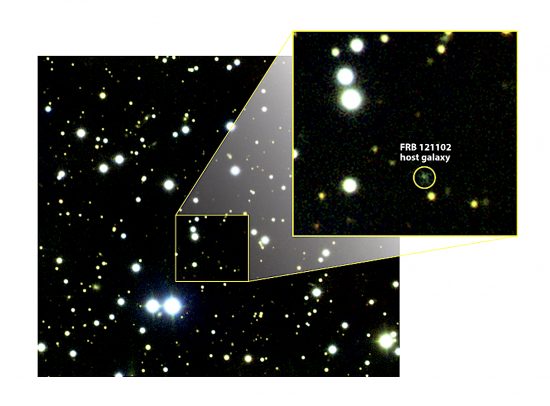
March 6, 2020
Astronomers think FRBs are created from dying stars.
About eight years ago, astronomers discovered an energy signature they called a “Fast Radio Burst”, or FRB. The blast of radio waves lasted five milliseconds, releasing more energy than the Sun puts out in a month. Distance to the source was said to be almost 3 billion light-years, and was surmised to come from the “death” of a black hole. Another source for FRB energy is thought to be from “cosmic batteries”. If a black hole orbits a neutron star, its immense gravity is thought to create the power that sends those strange bursts into space.
Cosmologists recently advanced the theory that black holes can “evaporate” with surprising violence. If a black hole contains “M” solar masses it will “glow” at 6 X 10^-8/M Kelvin. That means a black hole can eventually explode like a hydrogen bomb. It is those explosions that are supposed to generate radio emissions.
Recently, astronomers working with a combination of radio and optical telescopes announced that FRB 121102, the first repeating fast radio burst, exploded into space with the force of many supernovae. As the press release states, however, astronomers now have a new puzzle: the source of the broadcast is from a “surprisingly small galaxy”. Since the galaxy is “puny”, it is thought that black hole physics must be involved with FRB formation.
Black holes radiating away their masses does not conform to Electric Universe theory. Radio waves and a range of energy curves are properties of lightning bolts. Computer simulations demonstrate that plasma phenomena are scalable over several orders of magnitude, so they behave in the same way whether in atoms or galaxies. Perhaps FRBs are really flashes of cosmic lightning erupting from electrified clouds of plasma on an immense scale.
If correct, FRBs are most likely nearby, so they are less energetic. Plasma is the correct way to interpret their behavior, but it is exploding double layers that impel them. Rather than relying on mathematical phantoms like black holes in tandem with overweight neutron stars, why not create real, testable hypotheses and work them up with real, physical models?
Plasma experiments in the laboratory correspond to plasma formations in space because of the scalability factor: under similar conditions, plasma discharges produce the same formations independent of size, whether in the laboratory or on a planetary, stellar, or galactic level. Since duration is proportional to size, an electric spark that lasts for microseconds in the laboratory might last for years at the stellar scale, or for millions of years at the galactic scale.
Stephen Smith
The Thunderbolts Picture of the Day is generously supported by the Mainwaring Archive Foundation.












